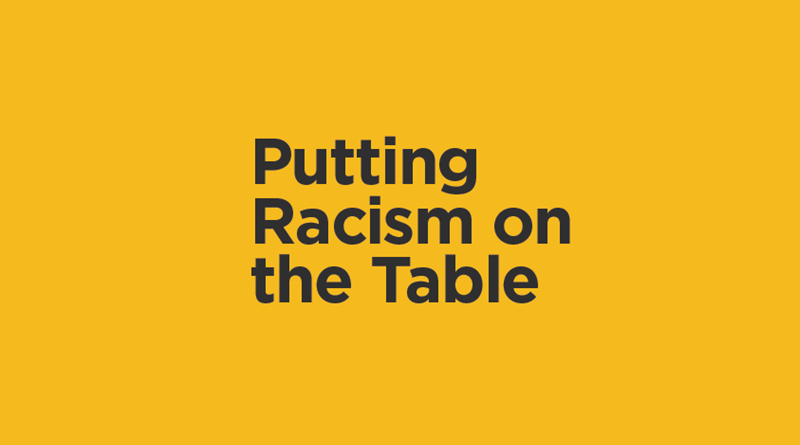These thoughts were written by Myla, one of our 2020 summer interns. The opinions expressed herein do not reflect those of Civitas other than respect for the value of open dialogue.
On May 25, 2020, George Floyd, an African American man, was arrested by the Minneapolis police for allegedly using a counterfeit bill. While he was handcuffed, Floyd was lying face down in the street. One officer, Derek Chauvin knelt on Floyd’s neck for eight minutes and forty-six seconds. Two more officers, J. Alexander Keung and Thomas Lane continued to restrain Floyd while the fourth officer, Tou Thao, prevented the bystanders from intervening and possibly saving Floyd’s life. Witnesses begged Chauvin to remove his knee from Floyd’s neck. However, he refused to comply with their pleas. As a result, bystanders recorded a video of the gruesome incident. Floyd repeatedly pleaded for life. He cried out for his mother and said a well-known statement, “I can’t breathe.” Unfortunately, Floyd had taken his last breath. During the final three minutes, he became motionless. When the paramedics arrived on the scene, he was pronounced dead. Since the heart-wrenching incident occurred, the video of George Floyd has gone viral.
On March 13, 2020, Breonna Taylor, an African American female, was brutally murdered in her home by the Louisville Police Department. Three white officers executed a no-knock warrant. On February 23, 2020, Ahmaud Arbery, also African American, was fatally shot while jogging in Glynn County, Georgia. He was confronted by two white men, Travis and Gregory McMichael. Allegedly, Travis stood over Arbery’s lifeless body and referred to him as the ‘n-word’.
Floyd, Taylor, and Arbery’s deaths all have sparked several conversations on racial issues in America. However, it seems like Floyd’s death was the last straw that broke the camel’s back. His tragic loss of life has triggered a global movement against police brutality and systemic racism. There is an overwhelming cry for justice in the nations. The United States is not the only country condemning institutional racism. Thousands of people across the world have participated in Black Lives Matter Protests. Countries including the UK, Germany, Italy, New Zealand, Canada, and more, stand in solidarity with the Black Lives Matter Movement (BLM).

Now, the whole world has their eyes and ears fixed on one word: racism. All 50 states in America and over 50 countries have participated in the BLM protests. With America at the forefront of the movement, protests have taken place on every continent except for Antarctica. For the first time in history, everyone wants to address the ‘elephant in the room’ – racism. Businesses are releasing statements in support of the protests. Organizations are condemning racism in every form from banning confederate flags and removing statues of slave traders and confederate leaders to bailing out detained protesters. Legislators are passing new laws. Academic institutions are reviewing the names of buildings on their campuses. Parents are having open dialogues about race with their children. Lately, when I check my social media, I see many people having live roundtable discussions about race. I was extremely shocked when I opened Netflix and discovered that there is a section dedicated to the BLM movement. For the first time in my life, I got to experience the entire world putting forth an effort to be more sensitive and inclusive of the African American community. In my 18 years of living, I have never seen this much compassion. In my opinion, there has been more immediate changes in the past few weeks than there has been in the past 400 years. It seems as though the other races finally understand the oppression of the black community. Now, people from all backgrounds are marching for social justice.
Addressing Race with Children
Since the world is finally addressing systemic racism, parents, especially white parents, are finally forcing themselves to have uncomfortable conversations with their children.

On June 6, CNN and Sesame Street aired a town hall to educate kids and their families on the protests. The morning program, Coming Together: Standing Up to Racism was hosted by CNN’s Van Jones and Erica Hill. Of course, CNN had to bring out the audience’s favorite characters: Elmo, Big Bird, and Abby Cadabby. Sesame Street was the perfect kids show to address racism with families across the country. The television show has been airing since 1969. Interestingly enough, the show was released one year after the Civil Rights Act of 1968. Parents recognize their childhood favorites and experience an overwhelming feeling of nostalgia. While some children may be excited to see the characters from their favorite show, others may be introduced to Sesame Street for the first time. During the program, Elmo’s dad, Louie, explains to Elmo how African Americans are unfairly treated due to the color of their skin. Abby Cadabby shared a personal story on how Big Bird was bullied by other birds because he has yellow feathers and he is extremely big. She stood up for Big Bird and showed empathy towards him. Abby’s story is told to encourage kids of all races to be allies to the Black community. Atlanta’s Mayor, Keisha Lance Bottoms and educators around the country answered questions from children and their families on the show.
The show highlighted the importance of educating this generation and the next generation about race and culture, so that the mistakes of the past would not shape the future. We should diversify our lives. We can not repeat the same depressing cycle of police brutality, racial inequality, and violence in the next 5, 10, 50, or 100 years. We can not be held down by the deadweight of institutional racism. We don’t want to hear racial slurs. We don’t want to repeatedly hear those three, dreadful words, “I can’t breathe.” We can not see another black body slain in the street. As a nation, we need to band together to create long term change because black lives matter today, tomorrow, and forever.

